Angiography is a minimally invasive diagnostic test that aids physicians identify and treat medical conditions. Angiography makes use of one of three imaging technologies and, in few cases, a contrast material that is dye to produce images of major blood vessels throughout the body.
The purpose of medical tourism is to find cheaper, but flawless quality healthcare with guarantees. One should never risk the health, opt for only clinics with qualified practitioners where one can feel safe and secure and also where one can communicate maybe in their own language. Hungary provides expertise in angiography. On an average, most diagnostic procedures in Hungary cost between 60 percent less than in the US and other cities in Europe. Patients from overseas flock Hungarian clinics to get reasonable treatment at the highest quality possible. Normally, the UK and Irish patients look for value and this is precisely they get in Hungary. Care, trust and professionalism are three main key features that play a role in the decision made by British and Irish health tourists.
On average, most medical procedures and tests like angiography in Hungary cost between 40 and 70 percent less than in the US, and the Scandinavian countries. Hungary is for the patients who need to save money on medical procedures but also at the same time have very high expectations regarding the best quality of work.
| Country | Cost | Local_currency |
|---|---|---|
| India | USD 500 | India 41575 |
| Israel | USD 2000 | Israel 7600 |
| Malaysia | USD 2000 | Malaysia 9420 |
| Poland | USD 1500 | Poland 6060 |
| South Korea | USD 3000 | South Korea 4028070 |
| Thailand | USD 1800 | Thailand 64170 |
| Tunisia | USD 2200 | Tunisia 6842 |
| Turkey | USD 1000 | Turkey 30140 |
| United Arab Emirates | USD 3020 | United Arab Emirates 11083 |
Treatment cost

Dr. Rose Private Hospital located in Budapest, Hungary is accredited by JCI. Also listed below are some of the most prominent infrastructural details:

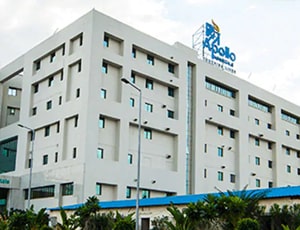
Types of Angiography (Including Non-Ionic Contrast) in Apollo Hospital and its associated cost
| Treatment Option | Approximate Cost Range (USD) | Approximate Cost Range (INR) |
|---|---|---|
| Angiography (Overall) | 559 - 1025 | 45560 - 84680 |
| Coronary Angiography | 556 - 910 | 46803 - 74107 |
| Cerebral Angiography | 688 - 1033 | 56011 - 83060 |
| Peripheral Angiography | 682 - 995 | 55842 - 82600 |
| Renal Angiography | 571 - 901 | 46659 - 74302 |
DOCTORS IN 13 SPECIALITIES
FACILITIES & AMENITIES
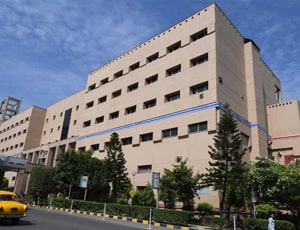
Types of Angiography (Including Non-Ionic Contrast) in Apollo Multispecialty Hospitals and its associated cost
| Treatment Option | Approximate Cost Range (USD) | Approximate Cost Range (INR) |
|---|---|---|
| Angiography (Overall) | 572 - 1007 | 45836 - 82177 |
| Coronary Angiography | 567 - 904 | 47052 - 73414 |
| Cerebral Angiography | 680 - 1004 | 54919 - 84672 |
| Peripheral Angiography | 673 - 1028 | 55794 - 84361 |
| Renal Angiography | 552 - 915 | 45840 - 73562 |
DOCTORS IN 13 SPECIALITIES
FACILITIES & AMENITIES

Types of Angiography (Including Non-Ionic Contrast) in Memorial Atasehir Hospital and its associated cost
| Treatment Option | Approximate Cost Range (USD) | Approximate Cost Range (TRY) |
|---|---|---|
| Angiography (Overall) | 574 - 1657 | 16658 - 50672 |
| Coronary Angiography | 915 - 1657 | 26560 - 51973 |
| Cerebral Angiography | 1123 - 2214 | 33619 - 68337 |
| Peripheral Angiography | 910 - 1717 | 27473 - 50562 |
| Renal Angiography | 898 - 1684 | 27048 - 50703 |

Types of Angiography (Including Non-Ionic Contrast) in Medicana Bahcelievler Hospital and its associated cost
| Treatment Option | Approximate Cost Range (USD) | Approximate Cost Range (TRY) |
|---|---|---|
| Angiography (Overall) | 552 - 1664 | 16873 - 51120 |
| Coronary Angiography | 885 - 1696 | 26656 - 50748 |
| Cerebral Angiography | 1131 - 2205 | 33733 - 68252 |
| Peripheral Angiography | 917 - 1661 | 27412 - 50783 |
| Renal Angiography | 918 - 1699 | 27419 - 50906 |
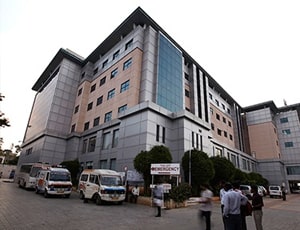
Types of Angiography (Including Non-Ionic Contrast) in BGS Gleneagles Global Hospitals and its associated cost
| Treatment Option | Approximate Cost Range (USD) | Approximate Cost Range (INR) |
|---|---|---|
| Angiography (Overall) | 571 - 1015 | 47016 - 84315 |
| Coronary Angiography | 562 - 894 | 45845 - 74536 |
| Cerebral Angiography | 685 - 992 | 54710 - 84061 |
| Peripheral Angiography | 664 - 990 | 56518 - 83070 |
| Renal Angiography | 570 - 911 | 46457 - 73912 |
DOCTORS IN 14 SPECIALITIES
FACILITIES & AMENITIES

Types of Angiography (Including Non-Ionic Contrast) in Fortis Hospital and its associated cost
| Treatment Option | Approximate Cost Range (USD) | Approximate Cost Range (INR) |
|---|---|---|
| Angiography (Overall) | 510 - 916 | 41580 - 75007 |
| Coronary Angiography | 509 - 814 | 41805 - 66591 |
| Cerebral Angiography | 607 - 915 | 50087 - 75268 |
| Peripheral Angiography | 607 - 910 | 50141 - 74822 |
| Renal Angiography | 508 - 815 | 41428 - 66274 |
DOCTORS IN 12 SPECIALITIES
FACILITIES & AMENITIES

Types of Angiography (Including Non-Ionic Contrast) in Wockhardt Hospital, Umrao and its associated cost
| Treatment Option | Approximate Cost Range (USD) | Approximate Cost Range (INR) |
|---|---|---|
| Angiography (Overall) | 507 - 916 | 41623 - 74922 |
| Coronary Angiography | 507 - 813 | 41417 - 66500 |
| Cerebral Angiography | 609 - 912 | 49794 - 74975 |
| Peripheral Angiography | 610 - 914 | 49991 - 74937 |
| Renal Angiography | 509 - 816 | 41729 - 66806 |
DOCTORS IN 13 SPECIALITIES
FACILITIES & AMENITIES
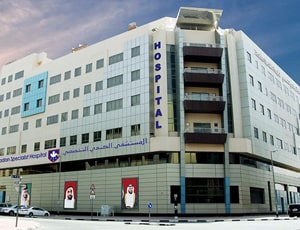
Types of Angiography (Including Non-Ionic Contrast) in Canadian Specialist Hospital and its associated cost
| Treatment Option | Approximate Cost Range (USD) | Approximate Cost Range (AED) |
|---|---|---|
| Angiography (Overall) | 2809 - 4514 | 10273 - 16353 |
| Coronary Angiography | 2827 - 3964 | 10140 - 14727 |
| Cerebral Angiography | 3367 - 4475 | 12179 - 16782 |
| Peripheral Angiography | 2776 - 3888 | 10424 - 14377 |
| Renal Angiography | 2851 - 3922 | 10403 - 14293 |
DOCTORS IN 9 SPECIALITIES
FACILITIES & AMENITIES

Types of Angiography (Including Non-Ionic Contrast) in Indraprastha Apollo Hospital and its associated cost
| Treatment Option | Approximate Cost Range (USD) | Approximate Cost Range (INR) |
|---|---|---|
| Angiography (Overall) | 568 - 994 | 45568 - 82064 |
| Coronary Angiography | 573 - 886 | 45337 - 73029 |
| Cerebral Angiography | 669 - 1028 | 55541 - 82581 |
| Peripheral Angiography | 677 - 1034 | 56052 - 81558 |
| Renal Angiography | 567 - 919 | 45908 - 73132 |
DOCTORS IN 14 SPECIALITIES
FACILITIES & AMENITIES
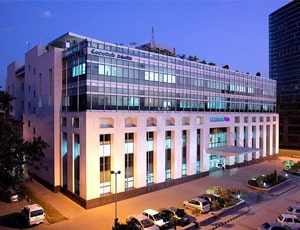
Types of Angiography (Including Non-Ionic Contrast) in Manipal Hospital, Yeshwantpur and its associated cost
| Treatment Option | Approximate Cost Range (USD) | Approximate Cost Range (INR) |
|---|---|---|
| Angiography (Overall) | 566 - 1006 | 46947 - 82514 |
| Coronary Angiography | 568 - 916 | 45960 - 73905 |
| Cerebral Angiography | 663 - 1020 | 54149 - 83386 |
| Peripheral Angiography | 687 - 1007 | 55538 - 82231 |
| Renal Angiography | 561 - 887 | 46940 - 74793 |
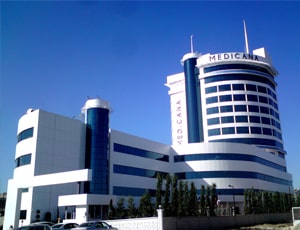
Types of Angiography (Including Non-Ionic Contrast) in Medicana Konya Hospital and its associated cost
| Treatment Option | Approximate Cost Range (USD) | Approximate Cost Range (TRY) |
|---|---|---|
| Angiography (Overall) | 557 - 1709 | 17165 - 50662 |
| Coronary Angiography | 918 - 1677 | 26734 - 50933 |
| Cerebral Angiography | 1132 - 2284 | 34280 - 68472 |
| Peripheral Angiography | 884 - 1699 | 26959 - 50516 |
| Renal Angiography | 886 - 1662 | 26941 - 51569 |
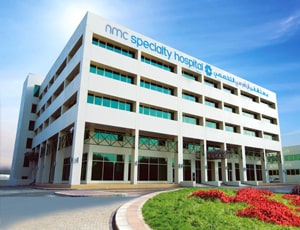
Types of Angiography (Including Non-Ionic Contrast) in NMC Specialty Hospital - Al Ain and its associated cost
| Treatment Option | Approximate Cost Range (USD) | Approximate Cost Range (AED) |
|---|---|---|
| Angiography (Overall) | 2804 - 4495 | 10413 - 16748 |
| Coronary Angiography | 2805 - 3873 | 10313 - 14334 |
| Cerebral Angiography | 3333 - 4498 | 12335 - 16806 |
| Peripheral Angiography | 2831 - 3991 | 10201 - 14316 |
| Renal Angiography | 2763 - 3949 | 10402 - 14300 |
DOCTORS IN 10 SPECIALITIES
FACILITIES & AMENITIES

Types of Angiography (Including Non-Ionic Contrast) in Medicana Bursa Hospital and its associated cost
| Treatment Option | Approximate Cost Range (USD) | Approximate Cost Range (TRY) |
|---|---|---|
| Angiography (Overall) | 562 - 1693 | 16908 - 51448 |
| Coronary Angiography | 905 - 1673 | 27319 - 51475 |
| Cerebral Angiography | 1114 - 2209 | 34306 - 68816 |
| Peripheral Angiography | 898 - 1689 | 27381 - 50056 |
| Renal Angiography | 910 - 1655 | 27671 - 51414 |

Types of Angiography (Including Non-Ionic Contrast) in Shanti Mukand Hospital and its associated cost
| Treatment Option | Approximate Cost Range (USD) | Approximate Cost Range (INR) |
|---|---|---|
| Angiography (Overall) | 509 - 911 | 41665 - 74838 |
| Coronary Angiography | 506 - 816 | 41488 - 66621 |
| Cerebral Angiography | 610 - 914 | 49784 - 74714 |
| Peripheral Angiography | 609 - 917 | 49883 - 74647 |
| Renal Angiography | 505 - 812 | 41548 - 66441 |
DOCTORS IN 11 SPECIALITIES
FACILITIES & AMENITIES
Most physicians advise their patients to undergo the angiogram procedure (also known as angiography and arteriogram) when certain symptoms such as a heart attack or chest pain become a source of worry. A stress test is performed on patients who report chest pain, which is then followed by an angiogram test.
Angiography procedure aims at testing the blockages in the coronary arteries apart from any other cardiovascular-related ailments. Angiography and angiogram procedure can both locate narrowing arteries or blockages that may exist in different parts of the body.
Angiography is recommended for patients with coronary heart diseases (CHD), which can cause the heartbeat to stop suddenly and abruptly. The patient may also suffer from severe chest pain. Angiography can also be performed on patients on an emergency basis when they experience a heart attack. If the blockage is not treated immediately, then healthy tissues around the heart start perishing and turn into scar tissue. It can give rise to several long-lasting problems. Angiography may also be required in the case of a patient with aortic stenosis or those who have had an abnormal heart stress test.
The procedure involves administering a sedative for relaxation. An intravenous line is inserted into the vein. This is just a precautionary step to ensure that medication can be provided or blood products can be given in case of unwanted complications that take place during the angiography procedure.
The patient is kept under close observation for at least 6 to 12 hours if the procedure is performed on an outpatient basis. In case of a femoral artery puncture, the leg is almost kept immobile during the observation period.
Blood pressure and other vital signs are continuously monitored. A cold pack is applied to reduce swelling in the area of puncture and medications are given in case of extreme discomfort.
Hematoma may develop in a few patients. This indicates continuous bleeding from the puncture site and has to be watched for. Two to three days of complete rest is advised and driving should be avoided in the case of patients who have had fluorescein angiography. Direct exposure to sunlight should be avoided for at least 12 hours.
Ask your healthcare adviser for the best multiple options and choose the one that meets your expectations
Angiography (Including Non-Ionic Contrast) package cost in Hungary has different inclusions and exclusions. Some of the best hospitals for Angiography (Including Non-Ionic Contrast) offer a comprehensive package that covers the end-to-end expenses related to investigations and treatment of the patient. The comprehensive Angiography (Including Non-Ionic Contrast) package cost includes the cost of investigations, surgery, medicines and consumables. Post-surgical complications, new findings and delayed recovery may have an impact on the total Angiography (Including Non-Ionic Contrast) cost in Hungary.
There are many hospitals that perform Angiography (Including Non-Ionic Contrast) in Hungary. Some of the best hospitals for Angiography (Including Non-Ionic Contrast) in Hungary include the following:
After discharge from the hospital, the patient has to stay for another 3 days in the country for complete recovery. This time frame is important to ensure that the surgery was successful and the patient is fit to fly back.
There are certain additional cost that the patient has to pay apart from the Angiography (Including Non-Ionic Contrast) cost. These charges starts from USD 50 per person.
The following are some of the best cities for Angiography (Including Non-Ionic Contrast) in Hungary:
The average duration of stay at the hospital after Angiography (Including Non-Ionic Contrast) is about 1 days for proper care and monitoring. The doctors team review the patient's recovery during this time with the help of blood tests and imaging scans. Once they feel that everything is on track, the patient is discharged.
There are more than 1 hospitals that offer Angiography (Including Non-Ionic Contrast) in Hungary. The above mentioned clinics have the required infrastructure and a dedicated unit where patients can be treated. Additionally, these hospitals are known to comply with the international standards as well as local legal requirements for the treatment of patients.
Some of the most sought after doctors for Angiography (Including Non-Ionic Contrast) in Hungary are: